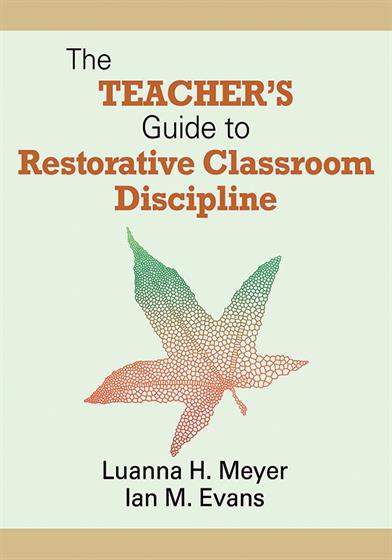Quote by Gloria Kishi, Hawaii Department of Education: The Teacher's Guide to Restorative Classroom Discipline represents the next generation of work in positive behavioral supports and school discipline that is sufficiently complex, appropriately comprehensive, and incredibly authentic. Finally, teachers, administrators, and school support staff have a framework that "rings true," pulling together previously isolated and oftentimes singularly considered practices of behavioral sciences, culturally responsive and effective teaching, and school-wide systems change. Meyer and Evans' groundbreaking work on restorative discipline recognizes that sound behavioral principles and effective teaching practices are used and useful only within settings that acknowledge personal histories, relationships, and the cultural values of students and families. It is no surprise that the authors have spent the majority of their careers in island ecosystems with large indigenous populations, where maintaining the delicate and intricate balance of elements are absolutely crucial, necessary, and lifesaving. The Guide's user-friendly style and well-organized content that includes anecdotes, classroom examples, planning guides, and scripts make this a valuable resource and necessary reading for every teacher and administrator.
The Teacher's Guide to Restorative Classroom Discipline represents the next generation of work in positive behavioral supports and school discipline that is sufficiently complex, appropriately comprehensive, and incredibly authentic. Finally, teachers, administrators, and school support staff have a framework that "rings true," pulling together previously isolated and oftentimes singularly considered practices of behavioral sciences, culturally responsive and effective teaching, and school-wide systems change. Meyer and Evans' groundbreaking work on restorative discipline recognizes that sound behavioral principles and effective teaching practices are used and useful only within settings that acknowledge personal histories, relationships, and the cultural values of students and families. It is no surprise that the authors have spent the majority of their careers in island ecosystems with large indigenous populations, where maintaining the delicate and intricate balance of elements are absolutely crucial, necessary, and lifesaving. The Guide's user-friendly style and well-organized content that includes anecdotes, classroom examples, planning guides, and scripts make this a valuable resource and necessary reading for every teacher and administrator.
Gloria Kishi
Hawaii Department of Education



